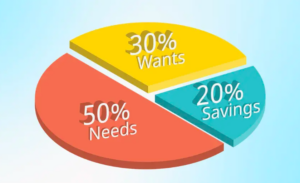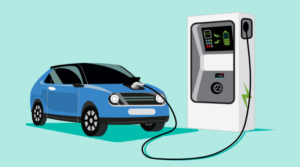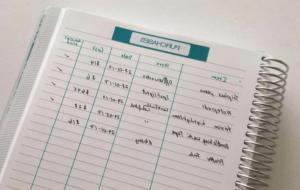Introduction: Embracing Frugality in 2025
Frugal living has never been more relevant. With evolving economic landscapes and growing environmental awareness, the concept of living well on less has gained immense traction in 2025. Rising inflation, supply chain disruptions, and climate change concerns have left individuals and families rethinking their consumption habits. Frugal living isn’t just about saving money—it’s a lifestyle designed to prioritize financial wellness and sustainability. Adopting frugality means making intentional choices, aligning spending with values, and focusing on long-term goals.
Understanding the Core Principles of Frugal Living
At its heart, frugality is about mindful consumption. It involves distinguishing between needs and wants and making financial decisions that align with personal priorities. This mindset encourages a shift from impulsive purchases to conscious investments in what truly adds value to life. Long-term planning plays a significant role in frugal living, ensuring that every dollar is spent wisely and purposefully. The ultimate goal? Financial independence and a simplified, more fulfilling way of life.
Budgeting and Financial Planning for Frugal Living
Effective budgeting is the foundation of frugal living. It starts with tracking every expense to understand where money is going. This awareness helps identify areas for savings, such as subscriptions you no longer use or unnecessary luxuries. Setting realistic financial goals, both short-term and long-term, is essential. From creating a basic budget spreadsheet to using advanced financial apps, tools can simplify this process. Frugality doesn’t mean deprivation. It’s about redirecting resources toward what matters most—whether that’s paying off debt, saving for a home, or building an emergency fund.
Smart Shopping Strategies for Frugal Living
Smart shopping is a hallmark of frugality. It’s not just about buying less—it’s about buying better. Using coupons, waiting for sales, and comparing prices are time-tested methods for reducing expenses. Bulk buying for non-perishable goods and household essentials can mean significant savings over time. Loyalty programs and cashback apps can further stretch your dollar. Frugality also encourages considering purchases carefully—waiting 24-48 hours before committing to a non-essential purchase can minimize impulse buying.
Reducing Housing Costs through Frugal Living
Housing expenses often take up the largest portion of a household budget, but there are ways to minimize costs without sacrificing comfort. Downsizing to a smaller, more affordable space is an option many adopt for both financial and environmental benefits. Others opt for renting instead of buying, reducing the financial burden of homeownership. Energy-efficient upgrades like LED lights, insulation, and solar panels can significantly cut utility bills. Sharing living spaces or renting out spare rooms are additional ways to make housing more affordable.
Saving on Transportation through Frugal Choices
Transportation costs can be reduced with a few strategic changes. Public transport remains one of the most cost-efficient options, especially in urban areas. For shorter commutes, cycling or walking saves money while doubling as exercise. Carpooling with colleagues or friends can significantly cut gas expenses. If owning a car is necessary, opting for a fuel-efficient or electric vehicle can help lower long-term costs, and regular maintenance ensures your car runs efficiently without unexpected breakdowns.
Frugal Eating Habits for a Healthier Wallet and Lifestyle
Eating well on a budget is a key aspect of frugal living. Meal planning is a game-changer— having a plan reduces last-minute takeout orders and ensures groceries are used efficiently. Cooking at home is almost always cheaper than dining out and offers greater nutritional control. Reducing food waste by storing ingredients properly and repurposing leftovers saves money and benefits the environment. For those with access to outdoor space, growing fresh herbs, vegetables, or fruits provides a satisfying way to cut grocery costs.
Entertainment and Leisure on a Budget
Living frugally doesn’t mean skipping out on fun—it means finding creative, budget-friendly ways to enjoy life. Free community events like concerts, markets, or outdoor festivals are often rich with entertainment value. Exploring nature through hiking, picnics, or cycling offers low-cost leisure opportunities. DIY hobbies, such as painting, knitting, or woodworking, provide fulfillment while keeping costs low. Frugal living emphasizes experiences over material purchases, fostering a greater appreciation for simple joys.
Sustainable Living through Frugality
Frugal living and sustainability go hand in hand. By consuming less and making intentional choices, frugality supports environmental conservation. Practices like reducing single-use plastics, buying secondhand, and repairing items instead of replacing them align with both frugality and sustainability. Supporting local businesses and choosing eco-friendly products further reinforce these values. A frugal lifestyle reduces waste and promotes mindful consumption, contributing to a healthier planet for future generations.
Overcoming Challenges and Staying Motivated on Your Frugal Journey
Sustainably practicing frugality comes with its challenges, from resisting societal pressure to keep up with trends to combating internal temptations to splurge. Staying motivated involves focusing on your goals and celebrating small victories, like paying off debt early or reaching a savings milestone. Surrounding yourself with like-minded individuals who share your values can provide encouragement and inspiration. Remember, frugality isn’t about perfection—it’s about persistence and being kind to yourself as you learn and grow.
The Future of Frugal Living: Trends and Innovations
Frugal living is evolving with the times, adopting modern trends and innovations. The sharing economy—think car shares, co-working spaces, and tool libraries—is gaining traction for its cost-saving and community-driven benefits. Minimalist lifestyles, focused on owning fewer items of higher quality, are becoming increasingly popular. Technology, from AI-powered financial tools to budgeting and tracking apps, is making it easier than ever to live frugally. These innovations ensure that frugal living remains accessible and effective in the years to come.
Why Frugality is the Smart Choice for 2025 and Beyond
Frugal living goes far beyond saving money—it’s about creating a life of purpose and sustainability. By aligning your spending with your values, prioritizing experiences over things, and adopting mindful consumption, you pave the way for financial security and a more fulfilling future. Whether you’re looking to reduce debt, save for a dream, or simply live a simpler life, frugality offers a practical, empowering path forward. Start small, stay consistent, and enjoy the lasting benefits of a frugal lifestyle.




